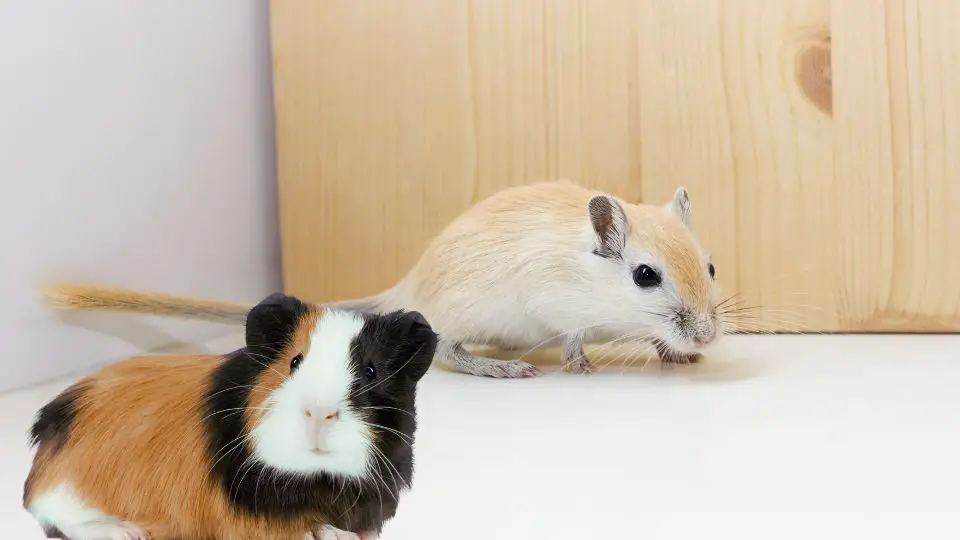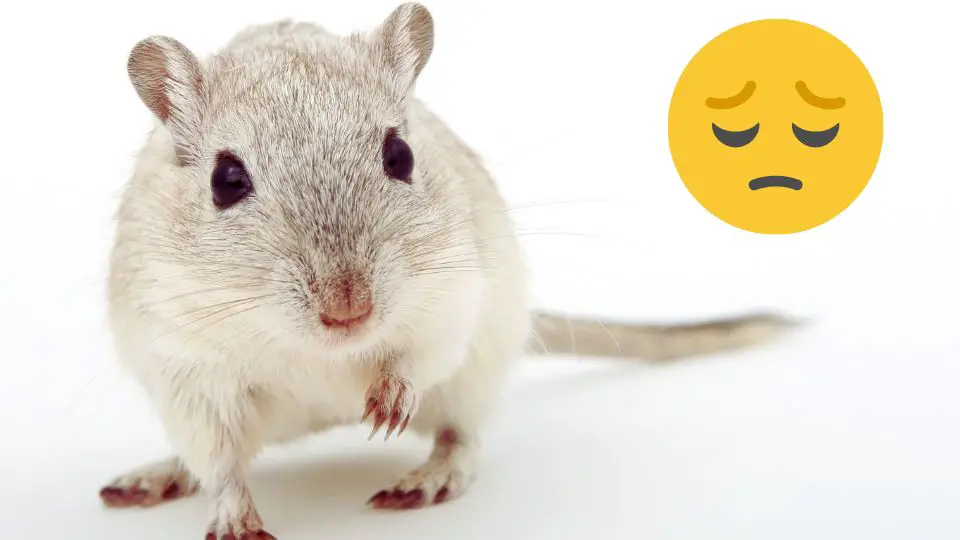Finding a gerbil on the loose in your home can be a challenging situation, but with the right approach, you can safely and successfully catch the elusive little creature.
In this article, we will guide you through the steps to catch a gerbil on the loose, ensuring their well-being and a quick resolution to the situation.
Assess the Situation
When you discover that your gerbil is loose, stay calm and carefully observe their movements. Try to determine their location within the room or area. Look for potential hiding spots where the gerbil may have sought refuge, such as under furniture, behind appliances, or in small crevices. Pay attention to any signs of activity, such as rustling sounds or movement behind objects.
Before attempting to catch the gerbil, assess the accessibility and safety of the area. Consider the obstacles that may hinder your efforts, such as furniture or clutter. Determine if there are any hazards that could potentially harm the gerbil or impede your ability to capture them. Ensure the room is secure, closing off any openings or blocking access to areas where the gerbil could escape or get stuck.
Gather the Necessary Supplies for Capturing the Gerbil
Before attempting to catch the gerbil, gather the necessary supplies to increase your chances of success. Prepare a container or box that is suitable for holding the gerbil securely without causing harm. It should have secure ventilation holes to provide adequate airflow. Have a towel or cloth ready to cover the container, which can help keep the gerbil calm and prevent escape. If necessary, wear gloves or use hand protection to avoid any potential bites or scratches during the capture process.
How to catch a gerbil on the loose
To catch a gerbil on the loose, follow these steps:
- Close off exits and block areas where the gerbil can escape.
- Use barriers like boxes or towels to limit its movement.
- Place enticing treats or familiar items near its hiding spot to lure it out.
- Approach slowly and calmly, avoiding sudden movements.
- Use gentle gestures to encourage the gerbil to come closer.
- Carefully secure it with both hands, ensuring a gentle grip.
- Transfer the gerbil to a secure enclosure with food, water, and a safe environment.
- Monitor its well-being and seek veterinary care if needed.
Remember to handle the gerbil with care and patience throughout the process.
Create an Enclosed Space
As soon as you realize that your gerbil is loose, it’s essential to close off any exits and block areas where the gerbil may be able to escape. Close doors and windows in the room to prevent the gerbil from getting into other areas of your home. Seal off small openings or gaps in furniture or walls that the gerbil could use as an escape route. By limiting its options, you can keep the gerbil within a manageable area.
Use Barriers to Restrict Movement
Use barriers such as boxes, towels, or furniture to create physical obstacles that restrict the gerbil’s movement. Place these barriers strategically to guide the gerbil towards a confined space where you can easily capture it. Be mindful of the gerbil’s size and agility when selecting the barriers, ensuring they are sturdy enough to prevent escape but not pose any harm to the gerbil.
Create a Confined Space
Designate a specific area or section within the room as a confined space where you can focus your efforts on capturing the gerbil. Clear the space of any potential hazards or items that could obstruct your visibility and movements. If possible, remove any other pets or distractions from the area to minimize additional stress for the gerbil.
Use Tempting Bait
In our experience, one effective method is to place enticing treats or familiar items near the gerbil’s hiding spot. These treats can include their favorite seeds, fruits, or vegetables. Ensure that the treats are fresh and aromatic to pique the gerbil’s curiosity. By placing the treats strategically, you can create a trail leading from the hiding spot towards a capture point.
Use Food or Treats the Gerbil Loves:
Another approach is to use food or treats that the gerbil is particularly fond of. Gerbils have their preferences, so consider using treats that you know they find irresistible. This might include sunflower seeds, dried fruits, or even small pieces of vegetables. The enticing scent and taste can entice the gerbil to venture out of its hiding spot in pursuit of the delectable reward.
Employ Gentle and Patient Techniques
Here are the steps involved in using gentle and patient techniques to catch a gerbil on the loose.
Move Slowly and Calmly:
To avoid startling or frightening the gerbil, you should move slowly and calmly. Sudden movements or fast approaches can cause the gerbil to become more agitated and elusive. Approach the gerbil with measured steps, maintaining a calm demeanor, and giving it time to adjust to your presence.
Speak Softly and Avoid Sudden Movements:
Gerbils are sensitive to noise and sudden movements, so speaking softly and minimizing sudden actions is key. Softly spoken words and a soothing tone can help create a sense of calm and trust. Avoid making loud noises or sudden gestures that might startle the gerbil and cause it to retreat further.
Use Gentle and Non-Threatening Gestures:
When attempting to catch a gerbil, use gentle and non-threatening gestures. Extend your hand slowly and maintain a relaxed posture to avoid intimidating the gerbil. Avoid reaching out abruptly or making sudden grabbing motions, as this can increase the gerbil’s anxiety. Allow the gerbil to become comfortable with your presence and gradually encourage it to come closer.
Capture the Gerbil
Capturing a gerbil requires careful and gentle techniques to prevent injury and minimize stress. Here is a step-by-step guide on how to capture a gerbil that is on the loose.
Slowly and Carefully Approach the Gerbil
Approach the gerbil with slow and deliberate movements to avoid startling or scaring it further. Make sure to maintain a gentle and controlled grip to prevent the gerbil from running away or getting injured. Keep in mind that sudden movements may cause the gerbil to become more anxious or fearful.
Use Both Hands to Secure the Gerbil
Using both hands, carefully and gently secure the gerbil. Support its body and hold it firmly but not too tightly, ensuring that you have a secure grip. Gerbils are delicate creatures, so you should handle them with care and avoid applying excessive pressure.
Lift the Gerbil Gently and Securely
Once you have a secure grip on the gerbil, lift it slowly and steadily. Be mindful of its small size and fragile bones. Make sure you have a firm hold to prevent any chances of escape or accidental dropping. Avoid lifting the gerbil too high or abruptly, as this can cause unnecessary stress.
Aftercare
Transfer the captured gerbil to a secure and appropriate enclosure. Ensure that the enclosure is escape-proof and free from any potential hazards. Provide a comfortable bedding material, such as paper-based or aspen shavings, and ensure adequate ventilation within the enclosure.
Provide Food, Water, and a Safe Environment
Offer fresh food and water to the gerbil to replenish its energy and hydration levels. Provide a balanced diet consisting of gerbil-specific pellet food, fresh vegetables, and occasional treats. Ensure that the water source is clean and easily accessible. Additionally, create a safe and enriching environment by adding toys, tunnels, and hiding spots to stimulate the gerbil’s natural behaviors.
Monitor for Signs of Stress or Health Issues
Observe the gerbil closely for any signs of stress, such as excessive grooming, decreased appetite, or unusual behaviors. Give your small pet time to adjust to its new surroundings and recover from the capture experience. If any health issues arise or if you notice persistent signs of stress, consult a veterinarian experienced in small animal care for a thorough examination and appropriate treatment.
Conclusion
Catching a gerbil on the loose requires patience, preparation, and gentle techniques. By assessing the situation, creating an enclosed space, using tempting bait, employing gentle and patient techniques, and finally capturing the gerbil with care, you can safely bring them back to a secure environment.
Remember to provide aftercare in a suitable enclosure and monitor the gerbil’s well-being. With these steps, you can handle the situation calmly and efficiently, ensuring the safety and welfare of your gerbil.







